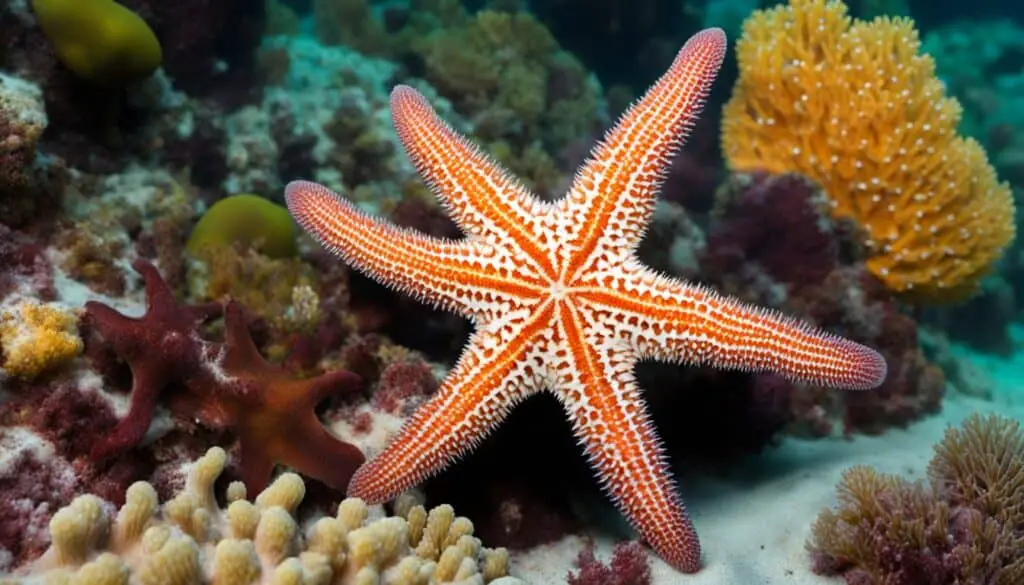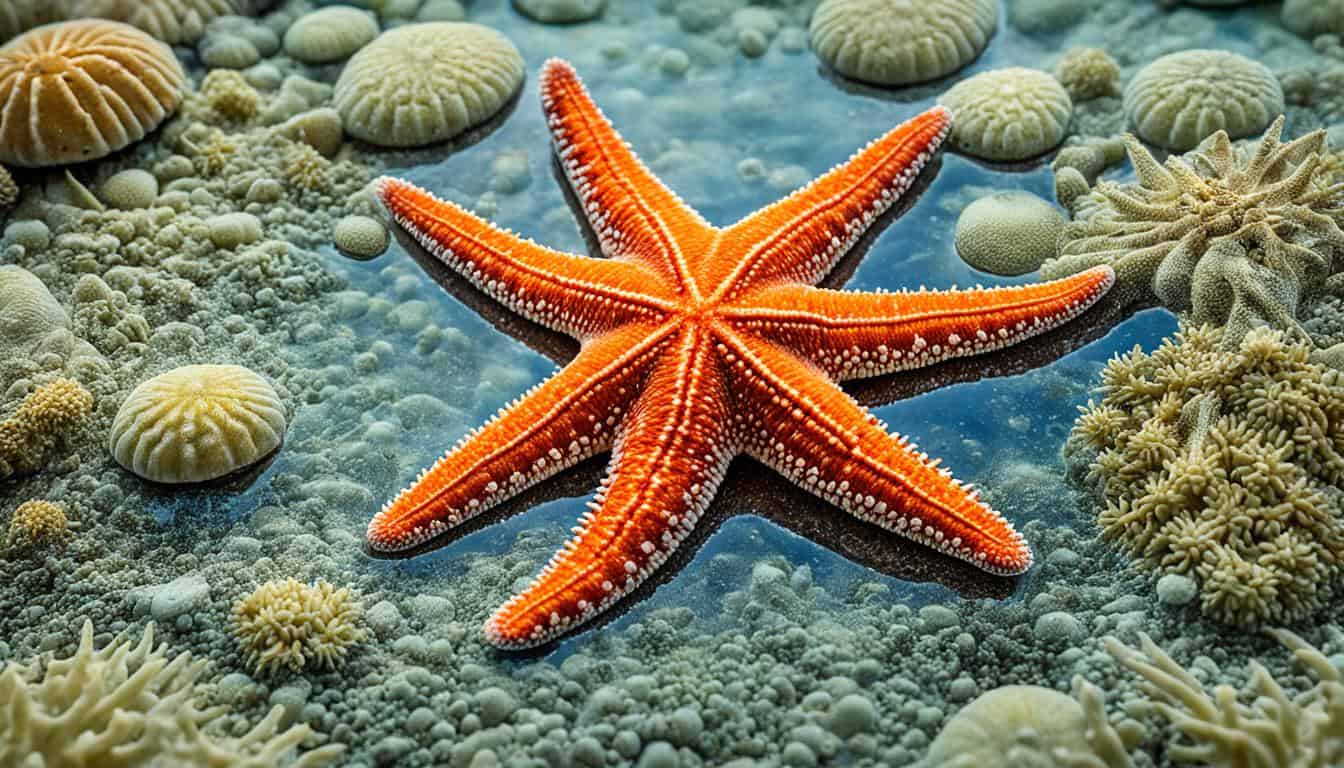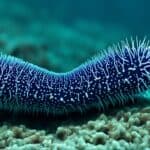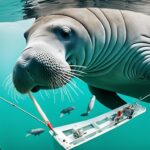Starfish, also known as sea stars, are truly remarkable creatures. They are famous for their ability to regrow lost limbs and sometimes even whole bodies. But how do they do it?
This amazing process relies on the health of their central disk. Species like Asterias rubens can repair their arms well. However, if the central disk gets badly damaged, it can be fatal.
They can also shed limbs as a defense against predators. This is called autotomy. It helps them survive attacks. Scientists find this fascinating and are studying it for possible human tissue repair.
The Fascinating World of Starfish Regeneration
Starfish have an amazing ability to regrow lost limbs. This shows how complex their biology is. For some starfish, like *Linckia*, cutting off an arm can lead to a brand new sea star growing. This shows how important starfish are in their ecosystems, as they can bounce back from injuries.
The way starfish regrow their limbs is quite complex. It involves many cellular and physiological changes. Scientists are studying this to learn more about regeneration in other creatures, including humans.
Understanding Starfish Anatomy
Looking into starfish anatomy shows us how they can survive and regrow parts. Their body shape is key to how they work and face challenges in their world.
Unique Body Structure
Starfish have a special symmetry, with five or more arms coming from a central disk. This design lets each arm carry parts of important organs. If a starfish loses an arm, it can still use the other parts for vital functions. This helps them recover and grow back lost limbs.
Importance of the Central Disk
The central disk is vital in a starfish’s body. It holds organs needed for living and regrowing. Without a working central disk, many starfish struggle to regrow lost arms. This shows how crucial the central disk is for health and survival in different environments.
How do starfish regenerate their arms?
The starfish’s ability to regrow its arms is a fascinating process. When it loses an arm, it starts a complex series of steps to get it back. First, it quickly seals its body to prevent fluid loss and damage.
Then, special cells called coelomocytes move in to help. These cells are key in the regeneration process. They form clots and clean the wound area. This shows how well the starfish can heal and how advanced its regenerative abilities are.
Next, the starfish starts to build new tissues and structures in the injured arm. This shows the amazing balance of biological processes in starfish. It helps them recover even after losing a limb.

Stages of Starfish Arm Regeneration
The process of starfish arm repair has several stages. Each stage is important for the successful growth of a new limb. Learning about these stages helps us appreciate starfish and their amazing biology.
Repair Phase
When a starfish loses an arm, it starts to protect itself. It forms a ‘hemostatic ring’ to stop blood loss and prevent infection. Special cells called coelomocytes help by making a clot to protect the wound.
Early Regenerative Phase
After the repair, the starfish starts to regrow its arm. It changes some cells to be more flexible. These cells move to the spot where the arm was lost, helped by special cavities inside the starfish. This is a key time for starting the healing process.
Advanced Regenerative Phase
In the last stage, the starfish grows new tissues and structures. This phase aims to fully restore the lost arm. How long this takes depends on the starfish species and its environment. The whole process can take months to over a year, showing how well starfish adapt to challenges.
Types of Regeneration in Starfish
Starfish have amazing regenerative abilities. They can regrow lost limbs and parts. This shows how they can survive even after big injuries.
Unidirectional Regeneration
Most starfish can regrow many arms if most of their body stays whole. This skill helps them recover and thrive in the ocean.
Disk-Dependent Bidirectional Regeneration
Some starfish can also regrow their central body if part of it is left. This shows how they can bounce back from big injuries.
Disk-Independent Bidirectional Regeneration
In rare cases, a starfish arm can turn into a whole new starfish without its central body. This shows their incredible ability to survive and adapt.
FAQ
How do starfish regenerate their arms?
Starfish can regrow their arms through a complex process. It starts right after they lose an arm. They seal the wound first, then use special cells to make new tissues. This helps them grow back the limb.
What is the starfish regeneration process?
The regeneration process of starfish has three main steps. First, the wound gets sealed in the repair phase. Next, cells change and move in the early regenerative phase. Finally, new tissues form in the advanced phase to rebuild the limb.
Are all starfish able to regenerate their arms?
Not every starfish can regrow their arms well. It depends on the species and the health of their central disk. Those with a healthy central disk have a better chance of successful regeneration.
What happens if the central disk is damaged?
If the central disk is badly hurt, many starfish find it hard to regrow their arms. The central disk has vital organs needed for regeneration.
How long does the arm regeneration process take?
Regrowing starfish arms can take months to over a year. This varies by species and the environment.
Can starfish regrow an entire body from just an arm?
Yes, some starfish, like *Linckia*, can make a whole new sea star from just one arm. This shows their amazing ability to regenerate.
What types of regeneration do starfish exhibit?
Starfish show different kinds of regeneration. These include unidirectional, disk-dependent bidirectional, and rare disk-independent bidirectional regeneration.
What roles do coelomocytes play in starfish regeneration?
Coelomocytes are special cells that help with wound healing. They form clots, seal the coelomic cavity, and remove debris during regeneration.
Why is starfish regeneration important for ecological balance?
Starfish regeneration is key for keeping ecosystems in balance. It helps them bounce back from being eaten and stay important in the ocean.







